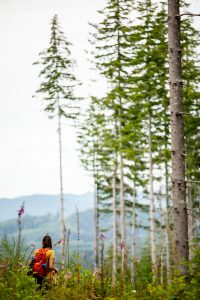Exploring Efforts to Use Nature to Heal Patients, and Lower Stress
Ideastream Public Media · October 3, 2016
Featuring Gregory Bratman and Kathleen Wolf, Nature and Health researchers

Studies have shown that being near trees and green spaces reduces stress and anxiety, eases depression, and even replenishes attention. In 2015, a Stanford University study found that people who strolled through green areas experienced a decrease of activity in the parts of their brains associated with rumination, or negative thinking, compared to those who walked beside a busy urban street. Greg Bratman led that study, as well as a second one.
“In the other study we put out in 2015… we also looked at anxiety, and negative or positive mood or affect,” Bratman said. “We noticed a pattern there as well… the nature walkers experienced decreased anxiety, decreased negative affect or feelings of negative mood, and also decreased rumination.”
Green space exposure has also been associated with reductions in elevated heart rate, blood pressure, and levels of the stress hormone cortisol. Kathleen Wolf, a researcher at the University of Washington who focuses on the link between nature and health, says one possible explanation for these physiological responses may be that humans are inherently wired to benefit from nature.